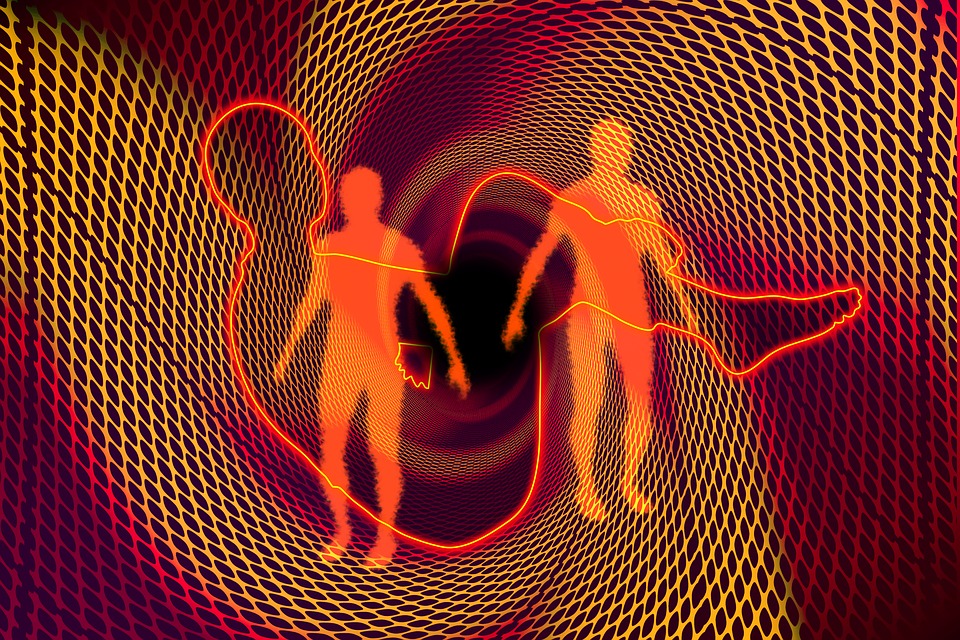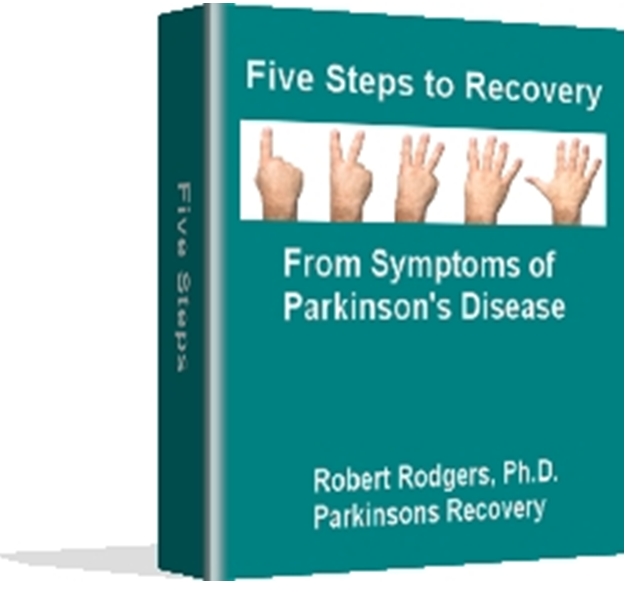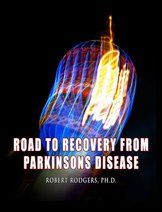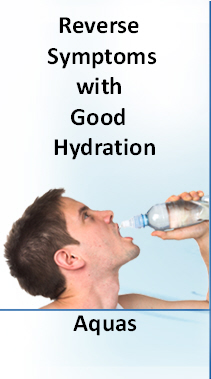What constipation remedies offer relief
from my persistent constipation?
Why should anyone be concerned about gut
problems when “everyone” knows the challenge
with Parkinson’s involves a neural dysfunction?
Why even bother with constipation remedies?
Answer: function of the gut has a huge influence –
I repeat huge – on the symptoms of Parkinsons.
When the gut is working properly depression lifts,
constipation is relieved and energy returns.
Let me be blunt. If your digestive system is
not functioning properly, all of the money
you spend on supplements and healthy food
goes down the toilet.
The process is wicked. You spend money on
supplements and healthy food. You pour quality
supplements and healthy food into your body
each day like clockwork.
The following day the supplements and healthy
food from the day before come out the other end
– unaltered. This happens over and over, day in
and day out. Your body is not absorbing the
nutrients.
To summarize:
- You pour money down the toilet day in and day out.
- You do not feel any better.
- You convince yourself it is impossible to feel better.
- You stop doing the things that help you feel better.
- End of story.
The good news is that constipation remedies exist to reverse this wicked
cycle. Natural approaches for improving gut function
are widely available. Constipation remedies
fall into three categories: increasing hydration in the body,
maintaining a proper pH level in the stomach and improving
overall function of the bowels.
First let’s consider the important role of hydration
which, as we age, becomes more and more
problematic.
Increase Hydration in the Body
If the body is not hydrated adequately,
waste begins to accumulate in the cells.
This is the underlying reason why many
people feel sluggish and run out of energy
by the afternoon. The most important of constipation
remedies solution is to hydrate
your body.
John Coleman, a naturopath doctor from
Australia who himself recovered from
Parkinson’s, highly recommends that
people with Parkinson’s take a homeopathic
remedy for dehydration called the Aquas.
This therapy involves taking a few drops
of a unique combination of essential oils
and Bach flower essences in the morning
and the evening.
The mechanism in the body that signals
thirst needs to be recalibrated as we age.
I was totally unaware until last year
that I had stopped drinking water.
The tissues in my body had become
chronically dehydrated. It is the type
of problem that creeps up on you so
slowly you do not even notice what
is happening.
I have personally been impressed with
the ability of Aquas to signal
thirst when my body needs to be better hydrated.
If I do not take the Aquas, I do not drink
water because I am never thirsty.
The Aquas have solved this problem for
me.
Stomach pH levels
Everyone should maintain a pH level in the
stomach of 2. The term “pH” is a measure of the
acidity of a solution like a body fluid. The most
acidic of liquids will have a pH as low as -5 (this
is a negative five). The most alkaline of liquids
have pH level of +14.
By way of comparison here is a sample of
pH levels from selected foods: lemon juice
pH = 2.4, coffee pH = 5.0, pure water pH = 7.0,
tomato pH = 4.0, milk pH = 6.5.
A point of confusion for many people is to
conclude that you need to eat more acidic
foods in order to maintain the correct acidic
content in your stomach. This is not true.
Disease flourishes when the environment
in the body is acidic.
A high proportion of the food you eat should
contain a high alkaline content. Many doctors
recommend that 60% of the foods should be
alkaline. Others suggest 80% of the foods you
eat should have a high alkaline content in cases
of chronic conditions like Parkinson’s.
Most people think of the acid-alkaline scale
as linear: i.e., from 2 to 3 = 1 and from 2 to 4 = 2.
It is not. Each individual pH unit is a factor of
10 more than the next higher or lower unit.
An increase in pH from 2 to 3 represents a
10-fold change. An increase of 2 to 4 represents
a one-hundred (100) fold change.
Shifting down from a pH level of 6 (which is very
alkaline) to a pH level of 2 (which is more acidic)
is thus not as easy as it might seem. Given the
tricky nature of pH, is there any wonder that it is
difficult to maintain the proper pH balance in
the stomach?
The pH in the stomach needs to be low because
acid is needed to break food down. Here is the
key: If there is not sufficient acid in the stomach
(i.e., the stomach is too alkaline), food does not
break down. No. It crawls its way into your gut
and – if you a squeamish do not read further – rots.
Please note that I said the pH level “n the
stomach should be around 2. The pH of
other body fluids such as urine, saliva
and blood vary considerably. For example,
the pH of blood is 7.4. Secretions of the
pancreas have a pH of 8.1.
In contrast, a fluid in the body that has a
high acidic content in the body is plaque.
Plaque’s pH is low and will dissolve teeth
if it is not removed.
How can you know if the pH level in your
stomach is “2”? After all, having a pH lab
test every day would be very expensive
and time consuming.
There is an easy way to know. It costs
nothing. It takes a second each day.
Simply pay attention to the color of your
bowel movements. OK. I know this is not
exactly a sexy topic, but it is important to
know.
If your poop is dark brown the pH
level in your stomach is low enough. You
are in good shape. If your poop is light
brown, there is not enough hydrochloric acid
in your system. That is to say, the pH level
in your stomach is too high.
So if the color of the poop is too light
corrective action is needed. What do
you do? Take Vitamin C and drink a
lot of water.
Vitamin C is the body’s anti-oxidant
of choice. If we give our bodies enough
Vitamin C, our bodies are able to
manufacture enough CO-Q10.
There are many vitamin C products on
the market, so be judicious in what you
choose to purchase. I use
Vital Mixed Ascorbates made by Pharmax which
is loosely packed in a 9 ounce container.
I mix it with water.
How much Vitamin C should you take? Your
body will tell you the answer. Just ask it. Muscle
test yourself. You will need to take more and more
Vitamin C until your poop turns to a dark brown
color.
Most people are unaware that our natural
biology calls for large quantities of vitamin C.
You may be shocked at how much is needed
for your body to come back into balance.
Improve Function of the Bowels
You are now well hydrated and your pH level is
good to go. Now it is time to focus on getting your
bowels moving. Everyone needs one good bowel
movement every day. Two to three movements
are ideal.
Herbs that can facilitate bowel function are
genian, chamomile, fennel and St Mary’s
thistle. Which herb (or herbs) will do the
best job for you?
I must sound like a broken record, but just
ask your body. Muscle test yourself. Your
body knows the answer.
John Coleman’s Constipation Remedy
John Coleman ND recommends a homemade
cocktail for people suffering from
digestive challenges including constipation.
He suggests you take this cocktail in the
morning and evening 1/2 hour before meals.
You make this special cocktail yourself.
The recipe:
12 ounces pure water
1/2 – 1 teaspoon Vitamin C powder
1/2 teaspoon magnesium
1 ml (eyedropper) zinc liquid
Aqua drops (1 drop AM in morning; 1 drop PM in evening)
1 drop selenium
Here is Neita’s recommendation on constipation:
Pointers that I learned for myself after years of reading about mega doses of vitamins for healing, and then being a manager for a VitaminWorld store for several years, so I studied more: Acidophilus or Pro Biotics and/or papaya enzymes eaten after 2 protein meals a day helped a life long constipation problem, which I was able to pass on to my customers, helping lots of people. The papaya is a digestive aid but it also works like a stool softener because the food is digested more properly. You start off taking how many it says on the bottle and adjust for your needs.
Once you get your digestive system back on line,
nutrients from the healthy food you eat will be
distributed to the cells that desperately need to be
nourished.
As always, check out my ideas to improve
your gut function with your doctor before you
decide to do anything. Always treat anything
I say as information that needs to be discussed
and evaluated with your medical doctor.
May your constipation resolve with attention to
the three key constipation remedies
May your energy rebound as your gut
function improves.
Your body and your pocketbook will thank you.
Robert C. Rodgers, Ph.D.
Founder 2004
Parkinsons Recovery
© Parkinsons Recovery










